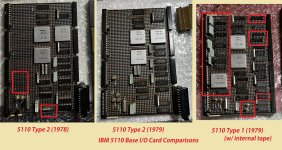stepleton
Veteran Member
I don't have much time to write a detailed suggestion here, but one thing you might look into is using machine code to control the tape directly.
The MARK command is a fairly complicated operation: it at least erases and writes, and it might read too. All of this activity might make it hard to pinpoint a problem.
I think there's a way to control the tape by fiddling with values in one of the I/O Control Blocks, but what I'm proposing is to bypass the IOCB altogether and use I/O instructions to control the tape directly. I don't recall the details of how you might do this, unfortunately, and I've also never tried!
The MARK command is a fairly complicated operation: it at least erases and writes, and it might read too. All of this activity might make it hard to pinpoint a problem.
I think there's a way to control the tape by fiddling with values in one of the I/O Control Blocks, but what I'm proposing is to bypass the IOCB altogether and use I/O instructions to control the tape directly. I don't recall the details of how you might do this, unfortunately, and I've also never tried!

